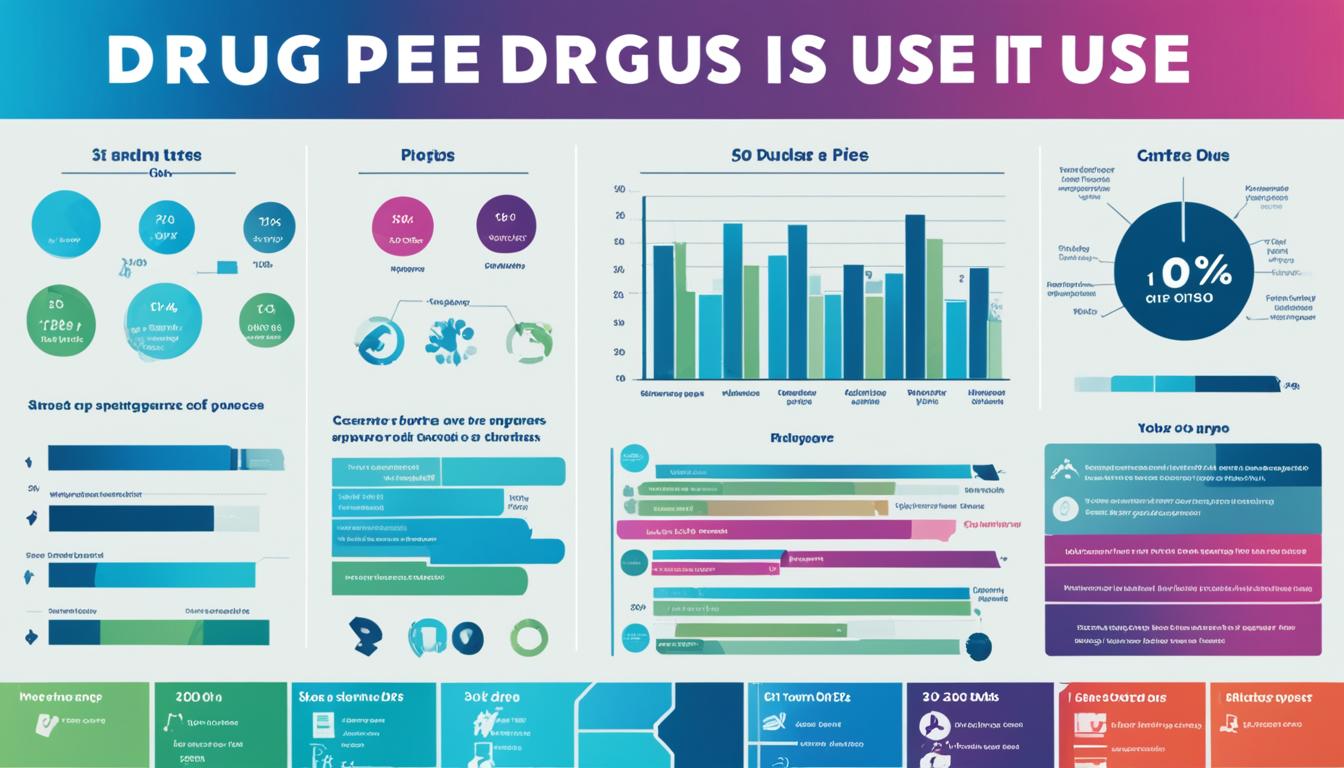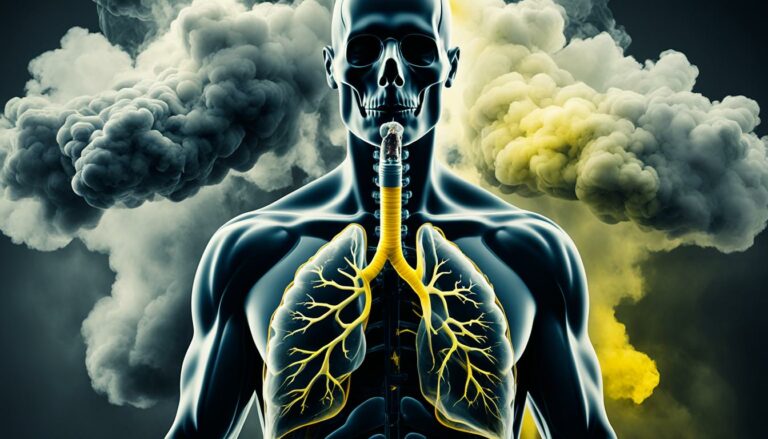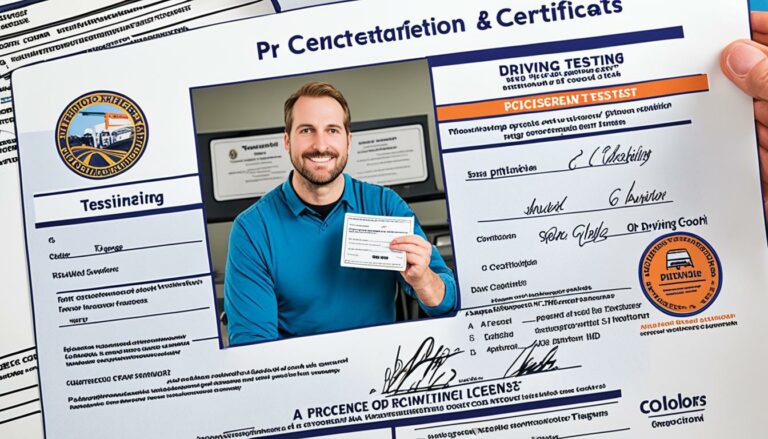Teen Drug Use Statistics: What Percentage?
Discover the shocking statistics on teen drug usage in the United States. Understanding the prevalence and scope of this issue is crucial for addressing the challenges faced by today’s teenagers. With comprehensive prevention and intervention efforts, we can make a positive impact on their lives.
According to recent data, at least 1 in 8 teenagers in the United States have abused an illicit substance in the past year. This alarming statistic highlights the widespread nature of drug use among adolescents and emphasizes the urgent need for effective strategies to combat this issue.
Key Takeaways:
- Approximately 1 in 8 teenagers in the US have abused drugs in the past year.
- Teen drug usage statistics underscore the importance of comprehensive prevention and intervention efforts.
- Understanding the prevalence of drug use among adolescents is crucial for addressing this issue effectively.
- Comprehensive strategies can help make a positive impact on the lives of teenagers and promote healthier choices.
- By working together, we can create a safer and healthier environment for our youth.
Drug Use Among Teenagers
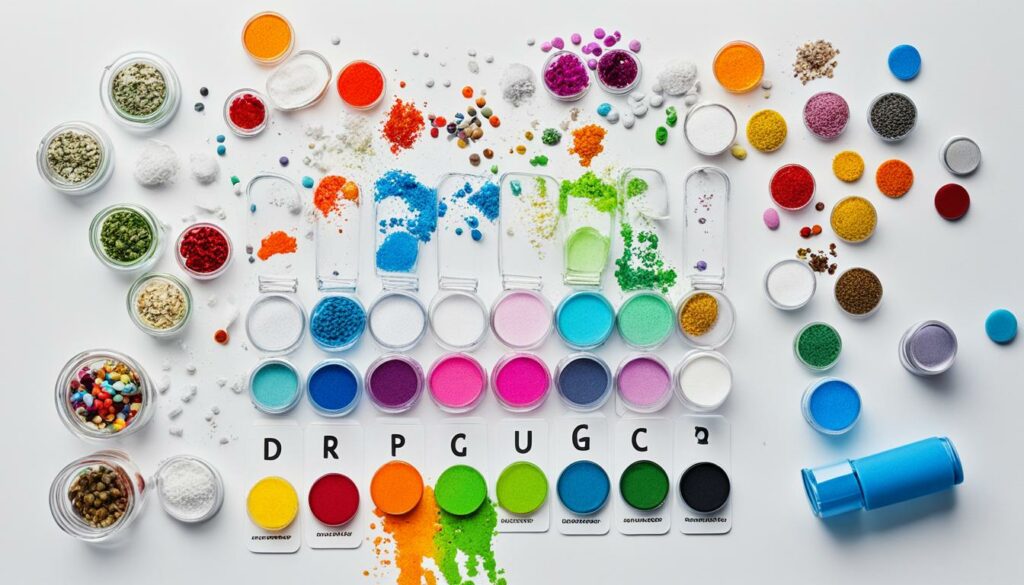
Drug use among teenagers is a concerning issue that requires attention and preventive measures. The statistics reveal the prevalence of drug abuse among adolescents and highlight the need for effective intervention strategies. Let’s dive into the numbers.
The Statistics:
Among 12- to 17-year-olds in the US, 8.33% report using drugs in the last month. This indicates a significant portion of teenagers engaging in drug use.
When it comes to the specific drugs being used, marijuana takes the lead. Among teenage drug users, 83.88% report using marijuana. This highlights its popularity and accessibility among this age group.
However, marijuana is not the only illicit substance being abused by teenagers. In the past month alone, 591,000 teenagers have used drugs other than marijuana. This demonstrates the diverse range of drugs being consumed by young individuals.
The statistics further reveal that by the time teenagers reach 12th grade, 46.6% of them have already experimented with illicit drugs. This showcases the alarming rate of initiation into drug use among teenagers.
The Need for Action:
These drug abuse statistics among adolescents underscore the importance of proactive measures to address the issue. It is crucial to educate teenagers about the risks associated with drug use, provide supportive environments, and promote healthy alternatives. By implementing comprehensive prevention programs, we can work towards reducing teenage drug abuse rates and ensuring a brighter future for our youth.
Together, let’s strive for a society where teenagers can thrive without the negative consequences of drug abuse.
“A comprehensive approach to drug prevention and intervention is essential in combating teenage drug abuse.” – Drug-Free Youth Organization
Youth Alcohol Abuse
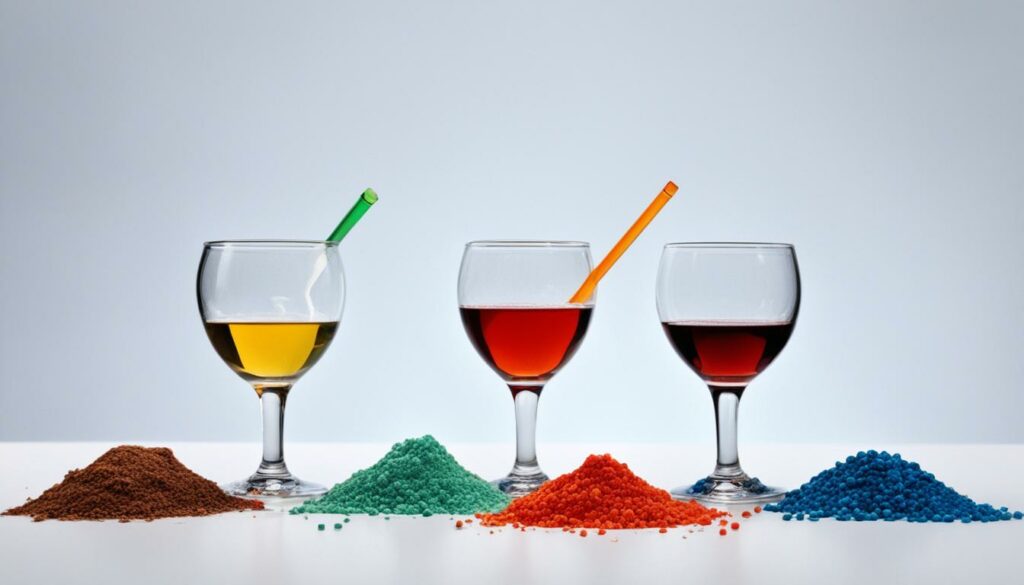
Alcohol is the most commonly abused substance among teens and young adults. In the US, 9.15% of 12- to 17-year-olds report using alcohol in the last month. By 12th grade, 61.5% of teens have abused alcohol at least once.
The statistics indicate the importance of addressing alcohol abuse among young people and implementing prevention strategies.
Marijuana Abuse
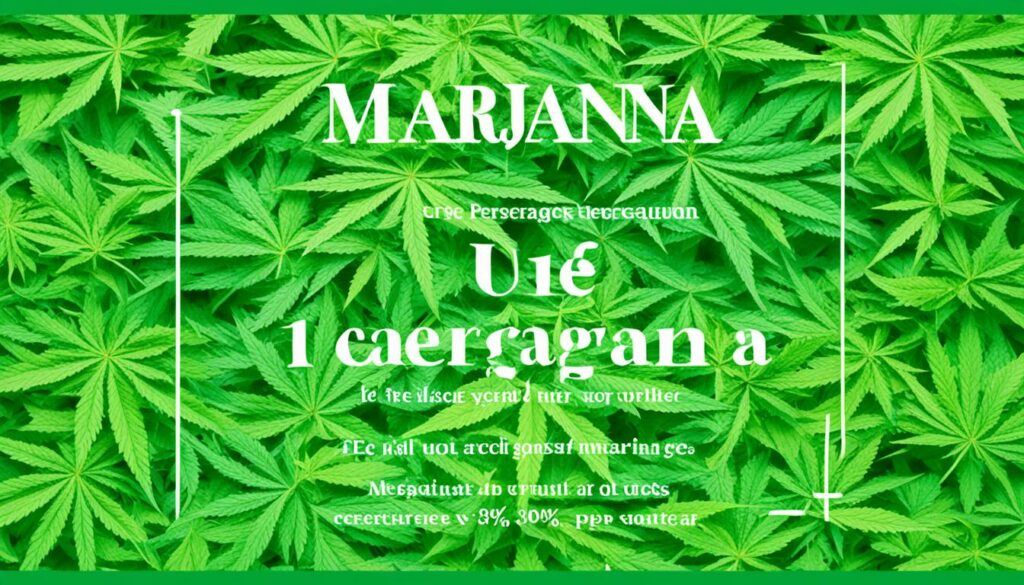
Marijuana is one of the most commonly used illicit substances among youth. According to the data, 35.2% of 12th graders have consumed marijuana in the last year, while 6.9% report using it daily.
Vaping has also become a popular method of marijuana consumption among 12th graders, with 62.8% using this method.
As the image suggests, the prevalence of drug use among teens, particularly marijuana, is a concerning issue that requires attention and intervention.
Opioid Abuse
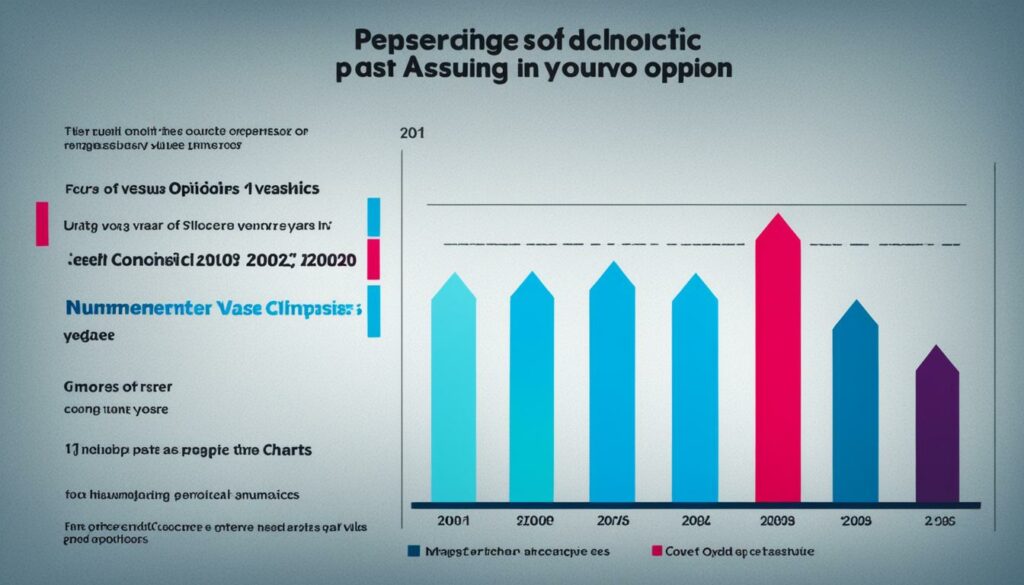
Opioid abuse is a significant concern among teenagers and young adults. The rise in opioid-related deaths emphasizes the need for education and prevention efforts. According to recent teen substance abuse statistics, overdose deaths due to opioids among 15- to 24-year-olds in the United States have increased by 500% since 1999. This alarming trend highlights the urgency of addressing opioid abuse among adolescents and implementing effective strategies to combat this devastating issue.
In the past year, drug use trends among adolescents show that 2.4% of 12th graders have abused OxyContin, while 1.2% have abused Vicodin. These figures shed light on the prevalence of opioid abuse among teens and the need for targeted interventions to prevent further harm.
Education plays a crucial role in preventing opioid abuse among adolescents. By providing comprehensive information about the risks and consequences associated with opioid use, we can empower young people to make informed decisions and avoid falling into the trap of addiction. Prevention efforts should also focus on promoting healthy coping mechanisms, resilience, and positive social support networks that can serve as protective factors against substance abuse.
The Role of Prescription Monitoring Programs
One effective strategy in combating opioid abuse is the implementation of prescription monitoring programs (PMPs). These programs allow healthcare providers to track and monitor the prescribing and dispensing of controlled substances, including opioids. By identifying potential misuse or diversion of prescription drugs, PMPs can help prevent the initiation of opioid abuse among teenagers and provide early intervention for those at risk.
PMPs have demonstrated success in reducing the number of prescription drugs available for illicit use and curbing the opioid epidemic. They serve as a valuable tool in the fight against opioid abuse among teenagers and young adults.
Support and Resources for Opioid Addiction
If you or someone you know is struggling with opioid addiction, there are numerous resources available to provide support and treatment. Seeking help from healthcare professionals, addiction specialists, or local support groups can make a significant difference in recovery.
| Resource | Description |
|---|---|
| National Helpline for Substance Abuse and Mental Health Services | A confidential and free 24/7 helpline providing information, treatment referrals, and support for individuals struggling with substance abuse and mental health disorders. |
| Narcotics Anonymous | A non-profit organization that offers support and recovery resources for individuals seeking to overcome addiction to opioids and other narcotics. |
| Substance Abuse and Mental Health Services Administration (SAMHSA) | A comprehensive website providing information, treatment locators, and resources for individuals and families affected by substance abuse and mental health disorders. |
Remember, there is hope and help available for those struggling with opioid addiction. Don’t hesitate to reach out for support and embark on the path to recovery.
Stimulant Abuse
Prescription stimulants are more likely to be abused by youth than cocaine or amphetamines. In the past year, 8.9% of 8th graders have tried amphetamines, while 1.6% of 12th graders have used crack cocaine at least once.
Addressing stimulant abuse among teenagers is crucial, as these statistics highlight the need for appropriate education and support to prevent further harm.
Youth Drug Abuse by State
When it comes to drug and alcohol abuse rates among youth, there are significant variations from state to state. Certain regions, such as Western states and New England, have higher rates of drug abuse among young people. On the other hand, the District of Columbia experiences higher rates of harder drug use and substance use disorders.
To provide a glimpse into the specific rates of drug abuse among youth, here are a few key statistics:
| State | Alcohol Use Disorder Rate | Illicit Drug Use Disorder Rate |
|---|---|---|
| Montana | Highest | – |
| Vermont | – | Highest |
| [State] | [Rate] | [Rate] |
| [State] | [Rate] | [Rate] |
| [State] | [Rate] | [Rate] |
As can be seen from the table, Montana has the highest rate of alcohol use disorder among youth, while Vermont has the highest rate of illicit drug use disorder.
Understanding the variations in drug abuse rates among youth is crucial for developing targeted prevention and intervention programs. By identifying the states with higher rates, resources and strategies can be better allocated to address the specific needs of those regions.
General Teen Drug Use Statistics
Drug abuse among adolescents is a widespread issue that requires urgent attention. According to drug abuse statistics among adolescents, approximately 1 in 8 teens in the US have reported abusing illicit drugs in the past year. This alarming statistic highlights the need for comprehensive prevention and intervention efforts to address this growing problem.
Moreover, teenage drug abuse rates reveal that a significant number of teens are personally acquainted with individuals who engage in substance abuse during school. In fact, a staggering 86% of teenagers know someone who drinks, smokes, or abuses drugs within the school environment.
Addressing the issue of drug abuse among adolescents goes beyond individual intervention. It requires a collective effort from parents, educational institutions, healthcare providers, and the community as a whole to provide education, support, and resources to help teenagers make informed choices and lead healthier lives.
“Drug abuse among teenagers is not just a problem for the individual; it affects the entire community. By working together and implementing effective prevention strategies, we can protect our youth and create a safer future,” says Dr. Sarah Thompson, a renowned adolescent psychologist.
Protective Factors Against Teen Drug Abuse
While the statistics on drug abuse among adolescents are concerning, there are several protective factors that can help mitigate the risks associated with teenage drug use. These factors include:
- Strong parent-child relationships
- Clear communication about drugs and their dangers
- Involvement in positive extracurricular activities
- Access to mental health support
- Community initiatives promoting substance-free lifestyles
By fostering these protective factors and creating a supportive environment, we can empower young people to make healthy choices and reduce the prevalence of drug abuse among teenagers.
| Teenage Drug Abuse Statistics | Percentage |
|---|---|
| Percentage of teens in the US who have abused illicit drugs in the past year | 12.5% |
| Percentage of teenagers who personally know someone who drinks, smokes, or abuses drugs during school | 86% |
| Percentage of teenagers who engage in positive extracurricular activities | 72% |
| Percentage of teenagers with access to mental health support | 64% |
| Percentage of communities with substance-free lifestyle initiatives | 55% |
These statistics provide valuable insights into the prevalence of drug abuse among adolescents and the importance of implementing preventive measures. By addressing the underlying causes and promoting protective factors, we can create a healthier and safer environment for our teenagers.
Teens and Young Adult Alcohol Use Statistics
Alcohol use among young people is a significant concern, with 7.10 million individuals between the ages of 12 to 20 reporting alcohol consumption in the last month. This data highlights the prevalence of alcohol misuse among teens and young adults, calling for increased efforts to address this issue.
Alcohol Statistics Among Teens
It is alarming to note that 1.9 million youths between 12 and 17 years old engage in binge drinking. Binge drinking, defined as consuming five or more drinks for males and four or more drinks for females in a short period, poses serious health risks and increases the likelihood of long-term alcohol abuse.
“Underage drinking has far-reaching consequences, including impaired judgment, increased risk of accidents, and negative impact on brain development.”
Addressing alcohol misuse among teens and young adults requires comprehensive prevention strategies, education on the risks and consequences, and accessible support systems. By promoting responsible drinking habits and providing resources for early intervention, we can effectively reduce alcohol-related harm among this vulnerable population.
| Age Group | Number of Individuals Engaging in Alcohol Use | Percentage |
|---|---|---|
| 12-20 | 7.10 million | — |
| 12-17 (Binge Drinking) | 1.9 million | — |
The table above summarizes the scale of alcohol use among teens and young adults. These statistics underscore the pressing need for targeted interventions and collaborative efforts to combat underage drinking and its associated risks.
By prioritizing prevention and education, we can work towards a future where young people make informed decisions about alcohol use, leading to healthier and safer communities.
- Implement comprehensive prevention programs in schools, addressing the risks associated with underage drinking and promoting healthier alternatives.
- Engage parents and guardians in conversations about alcohol use, equipping them with the knowledge and skills to guide their children towards responsible decision-making.
- Collaborate with healthcare professionals to identify early signs of alcohol misuse and provide timely intervention.
- Advocate for stricter regulations and policies to prevent underage access to alcohol, ultimately reducing its availability.
Specific Drug Use Statistics For Youth 12 to 17 Years of Age
Among youth aged 12 to 17, there is a concerning prevalence of drug use. According to recent teen drug usage statistics, 12.78% of teenagers reported using marijuana in the last year. Additionally, 7.5% of this age group have abused hallucinogens, and 5.9% have used LSD. These numbers illustrate the range of illicit drug use among teenagers, highlighting the need for effective prevention and education campaigns.
Furthermore, teen drug usage statistics reveal that 2.52% of youth aged 12 to 17 report misusing prescription drug painkillers. This misuse of prescription medication can have serious consequences for teens’ physical health and overall well-being. Additionally, 0.42% of teenagers in this age group have experimented with cocaine, a highly dangerous and addictive illegal substance.
These specific drug use statistics emphasize the importance of early intervention and prevention efforts targeted at adolescents. By providing teenagers with accurate information about the risks and consequences of drug use, as well as promoting healthy coping mechanisms and alternative activities, we can reduce the prevalence of drug use among teens and safeguard their future.
FAQ
What percentage of teens use drugs?
Recent data shows that at least 1 in 8 teenagers in the United States have abused an illicit substance in the past year.
What are the drug use statistics among teenagers?
Among 12- to 17-year-olds in the US, 8.33% report using drugs in the last month. By the time they reach 12th grade, 46.6% of teens have tried illicit drugs.
How prevalent is alcohol abuse among teens?
Alcohol is the most commonly abused substance among teens and young adults. In the US, 9.15% of 12- to 17-year-olds report using alcohol in the last month.
What is the prevalence of marijuana abuse among teenagers?
Marijuana is one of the most commonly used illicit substances among youth. According to the data, 35.2% of 12th graders have consumed marijuana in the last year.
What is the concern regarding opioid abuse among teenagers?
Overdose deaths due to opioids among 15- to 24-year-olds have increased by 500% since 1999. In the past year, 2.4% of 12th graders have abused OxyContin, while 1.2% have abused Vicodin.
Are stimulant drugs commonly abused by youth?
Prescription stimulants are more likely to be abused by youth than cocaine or amphetamines. In the past year, 8.9% of 8th graders have tried amphetamines, and 1.6% of 12th graders have used crack cocaine at least once.
How does youth drug abuse vary by state?
Drug and alcohol abuse rates among youth vary by state. Western states and New England have higher rates of drug abuse among young people, while the District of Columbia experiences higher rates of harder drug use and substance use disorders.
What are some general teen drug use statistics?
Overall, 1 in 8 teens in the US report abusing an illicit drug in the past year. Additionally, 86% of teens personally know someone who drinks, smokes, or abuses drugs during school.
What are the statistics on alcohol use among teens and young adults?
Alcohol use is common among young people, with 7.10 million individuals between the ages of 12 to 20 reporting alcohol consumption in the last month.
What are some specific drug use statistics for youth 12 to 17 years of age?
Among youth aged 12 to 17, 12.78% report using marijuana in the last year, 7.5% have abused hallucinogens, and 5.9% have used LSD. Additionally, 2.52% of this age group report misusing prescription drug painkillers, and 0.42% have tried cocaine.

